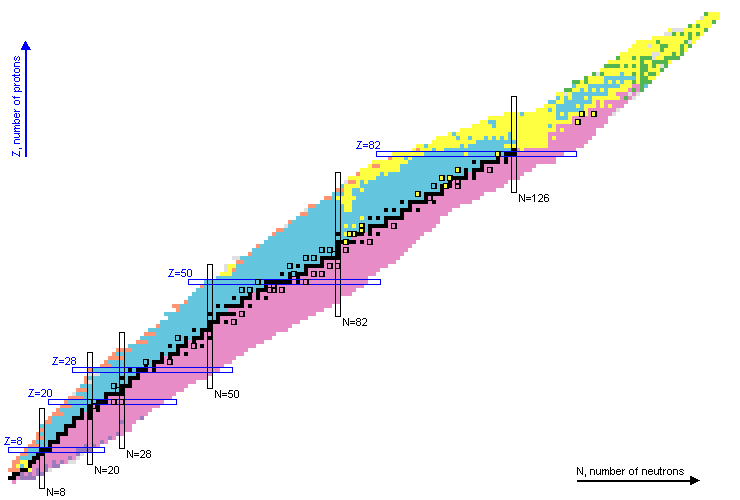Spontaneous Fission
Overview
The splitting of an undisturbed nucleus into 2 or more nuclei is known as spontaneous fission. Proton, neutron, alpha and cluster decay are extreme forms of spontaneous fission, but defined as different types of nuclear decay.
Chart Region
Spontaneous fission has been observed in heavy nuclei, Z > 82. Nuclei that exhibit SF decay are indicated with a green background in the chart of nuclei:

Spontaneous fission originates from two facts:
- It is energetically possible for heavy nuclei to split in two pieces since the binding energy per nucleon for the fissioning nucleus is smaller than the corresponding value for the fragments.
- The stability of heavy nuclei is challenged by the Coulomb repulsion among protons, that is, the strong nuclear force that binds protons and neutrons together can't provide a potential well deep enough to keep the nucleus together.
Additional Resources
Database Manager and Web Programming:
Alejandro A. Sonzogni
sonzogni@bnl.gov
Navigation
